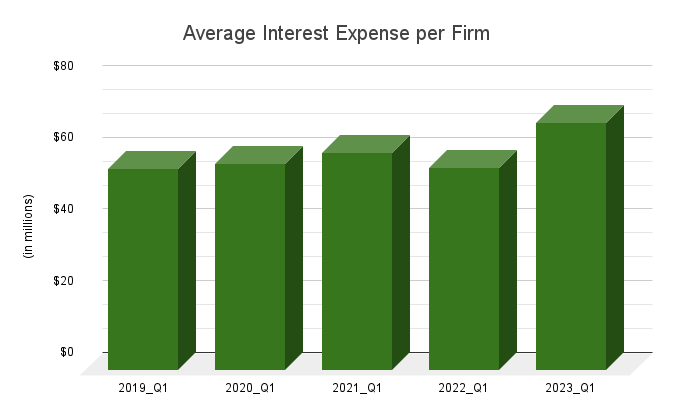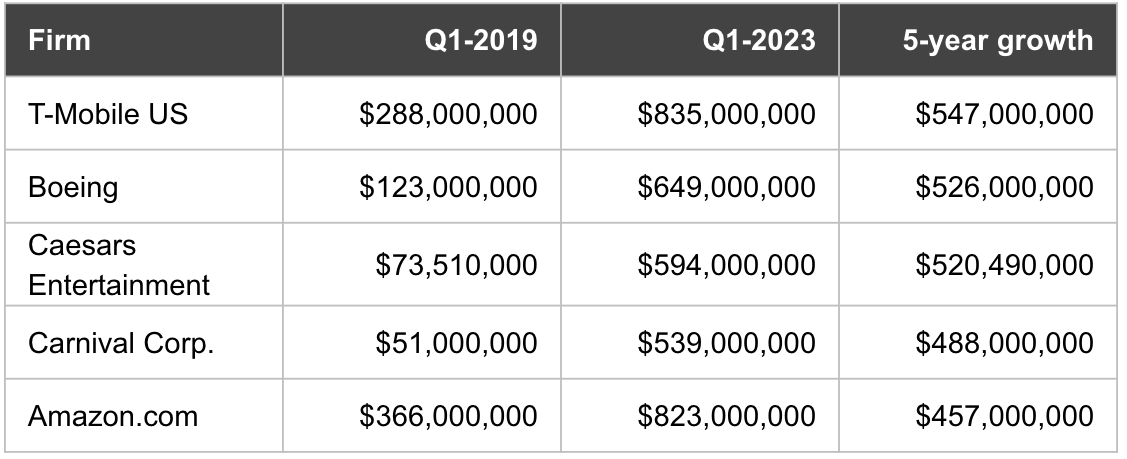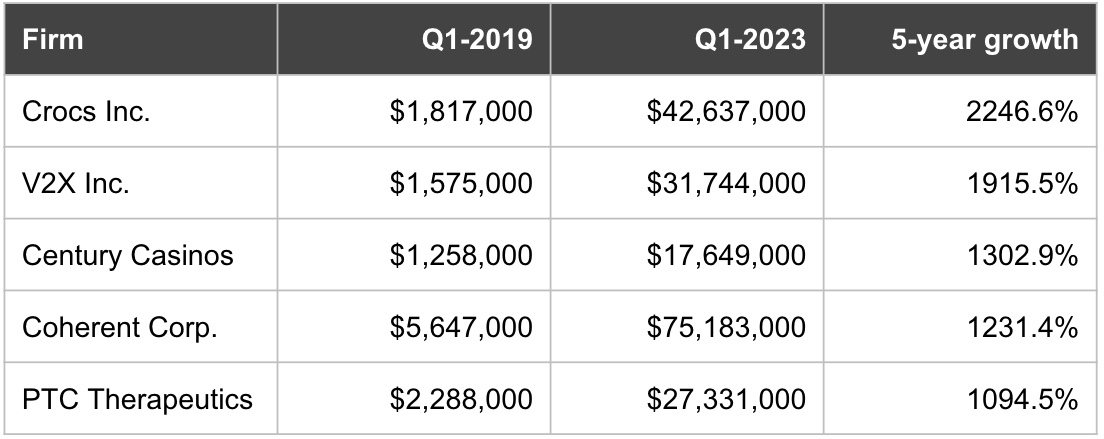Today we pivot back to interest rates, since we now have enough filings for Q1 2023 to perform another large-scale analysis of just how much companies are paying these days to cover the cost of their debt.
More. They are paying much more.
Specifically, Calcbench studied the Q1 interest expense for more than 1,000 filers for the last five years. For most of that period, interest expense was remarkably flat — until Q1 2023, when the number jumped a painful 22 percent. See Figure 1, below.

What’s going on in Figure 1 is this: pre-pandemic, when interest rates were low and life was grand, the corporations in our analysis sample poked along with Q1 interest expense somewhere around $60 billion, give or take a billion. Then the pandemic struck in 2020, and corporations loaded up on debt — to the extent that even with rates essentially near zero, interest expense in Q1 2021 nudged upward to $64.3 billion, before dropping back to $60.1 billion in Q1 2022.
Then came the inflation costs, and the Federal Reserve’s punishing wave of interest rate hikes throughout 2022. So corporations’ interest expense for Q1 2023 popped by that painful 22 percent, to $73.3 billion.
Even more unsettling, average interest rate costs also rose 22 percent this year. So we can’t really blame a few outliers whose big debt loads and bad timing led to major refinancings and gigantic interest expense costs that skewed things for the whole group. Interest expense is rising at a painfully high pace for companies across the board. See Figure 2, below.

All that said, individual debt levels do matter here. That is, a company might have had a very low level of debt in 2019, and then doubled or tripled that debt over the last five years — but that doesn’t necessarily mean financial suffocation now; it only means that interest expense rose sharply in relative, percentage terms. In absolute dollars, even the higher interest expense of today might not be a big hit to the balance sheet, if the company is generating lots of cash from operations.
For example, Table 1, below, shows the five companies with the largest increase in interest expense from 2019 to 2023 in absolute dollar terms.

How painful those higher interest expenses are depends on the company. Amazon.com ($AMZN) was racking up debt and interest expense because it grew like crazy during the pandemic, when the world had nothing to do but order stuff online with government stimulus payments. Cruise company Carnival Corp. ($CCL), on the other hand, was racking up debt while most of its cruise business was in drydock for at least a year.
Table 2, below, shows the five firms with the biggest jump in interest expense in percentage terms. As you can see, it’s a very different lineup.

One interesting factoid: only one company was on our Top 10 lists for biggest interest expense jumps in both absolute and percentage terms. That was Carnival Corp. Make your own quips about sailing into headwinds.
For those who want to explore debt and interest expense further, remember that Calcbench ran a five-part series on corporate debt at the start of this year. In particular we had a post that reviewed how to find all these disclosures on Calcbench, and detailed, firm-by-firm analysis is crucial if you want to reach the correct insights in these tricky times.